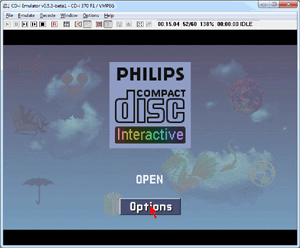
A new virtual drive will be displayed between all other drives in the folder Computer/ This PC. If you do not want to see this dialog box every time you mount an image, check the “Manage drive letters automatically” box. You can also right-click and select “Select drive letter & mount” from the contextual menu.

When the installation is complete, you can mount the optical disk’s images by double-clicking them in Windows Explorer or File Explorer.
#Working cd i emulator for windows install#
During the installation, it will prompt the installation of the WinCDEmu driver click the Install button. Double-lick on the downloaded file to start the installation.
#Working cd i emulator for windows how to#
To use WinCDEmu, no instruction is required however, we explain how to use WinCDEmu? How to use WinCDEmu? There is an Add/Remove entry, so if it causes problems (this is not for me), you can drop it.

This is because the program is supposed to work as part of Windows, and it works just fine. There is no system tray applet or even a Start menu program for configuring the application. Right-click the resulting drive letter, select Eject and drive and drive letter disappears. At this point, the CD/DVD will run automatically if Windows is configured to do so, or you can scroll through it and extract files. Even if they offer functionality or emulation modes (such as mounting copy-protected discs) that WinCDEmu does not offer, They’re not that simple to use.Īfter the installation of WinCDEmu, you need to double-click on any iso, cue, raw or IMG image file, and it mounts (i.e., looks like a drive letter on Windows). There are many worthy optical disk emulators in the market, such as Daemon Tools, AnyDVD, Virtual CloneDrive, etc. You’re gonna love that WinCDEmu freeware gem. WinCDEmu is free for all types of use, and it is licensed under LGPL. If you downloaded an ISO image and want to use it without burning it to a blank disk, WinCDEmu is the simplest way to do so. WinCDEmu is an open-source CD/DVD/BD emulator – software that lets you mount optical disc images by just clicking on them in Windows Explorer.


 0 kommentar(er)
0 kommentar(er)
